Father and daughter come together for 'Flag Day'
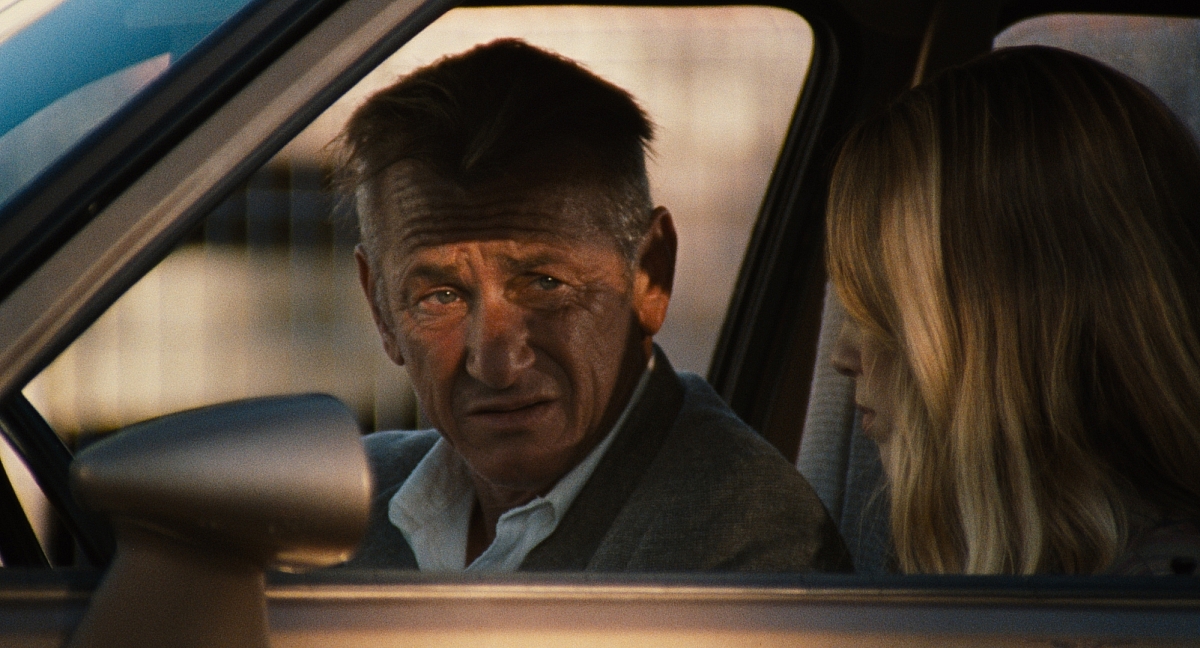
"Flag Day" marks the first time Sean Penn has both directed and acted in the same movie.
A frequent member of the red carpet at the Cannes Film Festival is Sean Penn who gets to share the experience with his daughter Dylan Penn both as a director and co-star with the world premiere of Flag Day; based on the memoir Flim-Flam Man: The True Story of My Father’s Counterfeit Life, Dylan Penn portrays journalist Jennifer Vogel while Sean Penn stars as the con artist patriarch John Vogel. Coincidentally, cinematographer Daniel Moder carries on the father-daughter theme even further as his daughter sits in the front passenger’s seat as he drives and talks about the biographical drama. “Going into it we knew the story and the actors were like lightning in a bottle so we were doing our best to keep the quality and energy in the right place. It was Sean’s first time as actor and director on a movie, and since it was our first time working together there was more pressure to get it right and not have him worry. Some days we didn’t have as much of a plan as we would have liked, but the shorthand developed until there was an organic evolution to how we captured our footage.”
“Sean and I grew up in the same town and usually had shared sensibilities in how to tell the story,” states Moder. “It has been 30 years since Sean had his first movie The Indian Runner at Cannes and prior to that so many movies as an actor; he has picked up a lot of stuff along the way and doesn’t forget it. It was tricky finding some of our visual language because it was in his head; sometimes he would want to be real classic or run and gun or homage to a zoom shot he wanted to do. In the beginning when the kids are younger there is definitely a lot more handheld and movement to the camera. When the story shifts to Dylan Penn, we settled the camera much more. Personally, my absolute favorite part, maybe of my career, was looking through the eyepiece at Sean and being able to just stare and witness the amazing choices and details he applies as an actor. All of the hustle would fall away and we could enjoy the performance.”
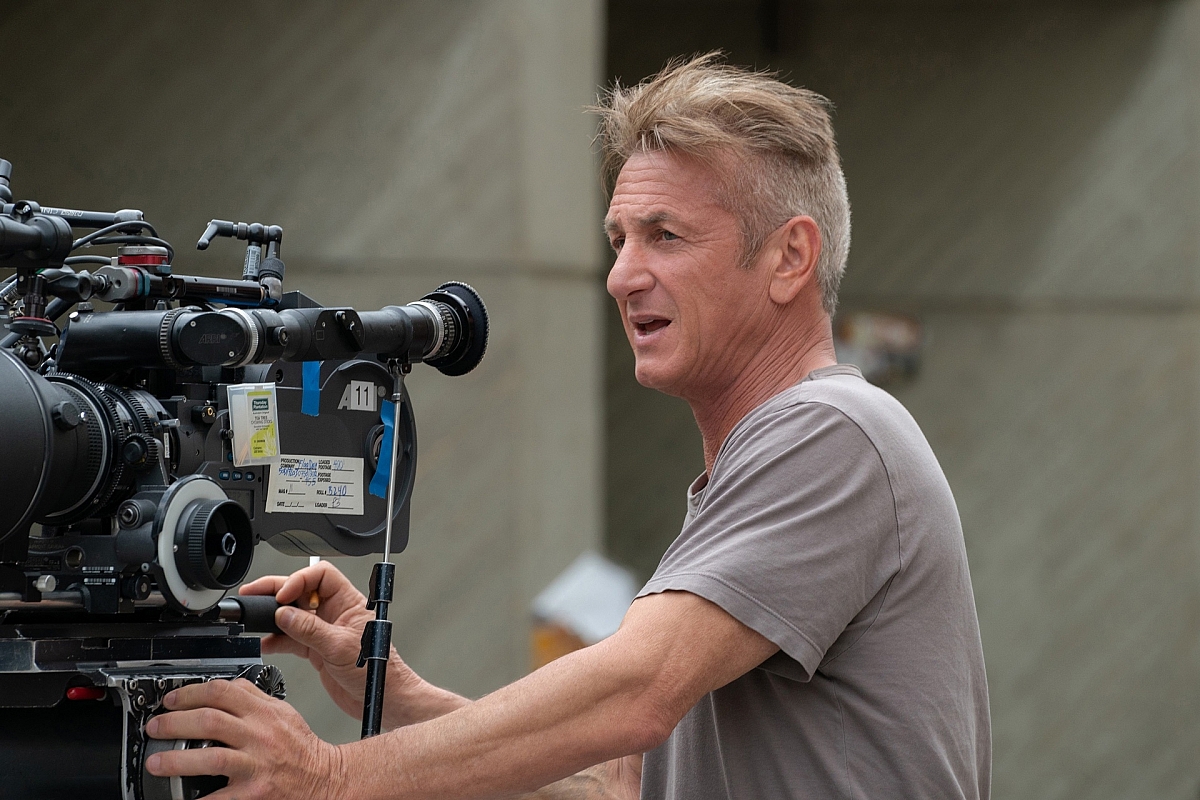
Carrying on a tradition that began with "The Indian Runner" 30 years ago, Sean Penn returns to the Cannes Film Festival as a director for the world premiere of "Flag Day."
In preparation for the visuals, Moder brought in storyboard artist Peter Beck to assist with the scene assembly. “Peter and I had a couple of marathon sessions for specific scenes like the car chase or capturing emotional moments here and there. It gave us a starting point and then Sean would edit; it was a great exercise.” Being able to shoot on film was a refreshing experience. “Film has a signature that is hard to replicate. I think it really has a forgiveness similar to the way our mind sees things. This story takes place from the early '70s til ’92. One of the first demands Sean made was it had to be on film and everyone was onboard. The choice for 16mm was even better since the look is undeniably film. A lot of the references that Sean gave me were things that had this filmic look and deep blacks. Sean didn’t want me locked in a DI tent either. We had no playback. There was throwback to a classic system of making a movie on set. There was limited access to the monitors on set. It really allowed us to keep moving forward and have faith! It made for a creative and efficient workspace.”
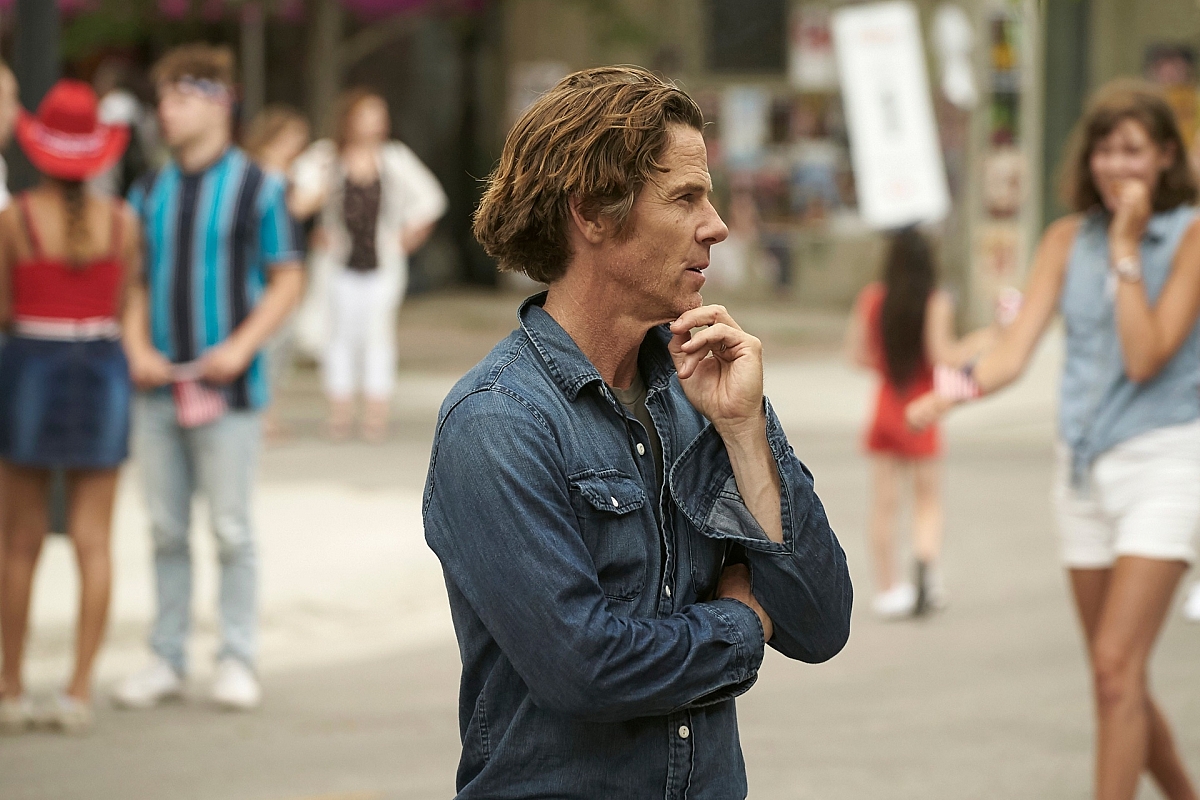
"Flag Day" marks the first time that cinematographer Daniel Moder and actor/director Sean Penn have collaborated together.
Around 95 percent of Flag Day was shot in real locations situated in Winnipeg, Manitoba serving as Minnesota with pre-production lasting eight weeks and principal photography consisting of 35 days. “The movie takes place from a young girl telling her story from the age of 6 to 27. So many seasons pass in that time. It was such a joy that we could shoot the majority of it in the summer and fall. Then we took three or four months off and went back in January of 2020.” The primary 16mm film stock was KODAK VISION3 50D Color Negative Film 7203 as well as KODAK VISION3 250D Color Negative Film 7207 and KODAK VISION3 500T Color Negative Film 7219. "At the end of the day, I had my notes about what we were shooting and what colors I was looking for. Every once in awhile I would take a picture, play with the colors, and send it over with the day’s footage to Mels in Montreal to process and make dailies. They were able to turn around in 24 hours if there were no weekends or holidays. Sean had faith that the video tap/monitors weren’t true, and then dailies got us very close to where we wanted to be.”

Daniel Moder believes film has a signature that is hard to replicate.
Keslow Camera supplied the camera and lenses while William F. White provided the lighting equipment. “I tried to use tungsten as much as possible because I prefer that warmth and strength,” remarks Moder. “You really notice the heat in a small set but that’s a bit of sacrifice when you have the tungsten lights. One of my favorite things is to use a good old China ball. They can be tough to manage but served us well to mimic practicals. The lens package consisted of Zeiss Super Speeds and Zeiss Ultra Primes ranging from 6mm to 50mm with longer 35mm lenses consisting of 85mm and 135mm.” The cinematographer was supported by great crew members. “Jason Heke was my first AC and phenomenal department head who kept it all running smooth between equipment, man power and film stock inventory. Marcus James was an excellent B operator collaborator who understood the vibe and performed heroically. Rick Doyle was my excellent key grip who stepped up.”
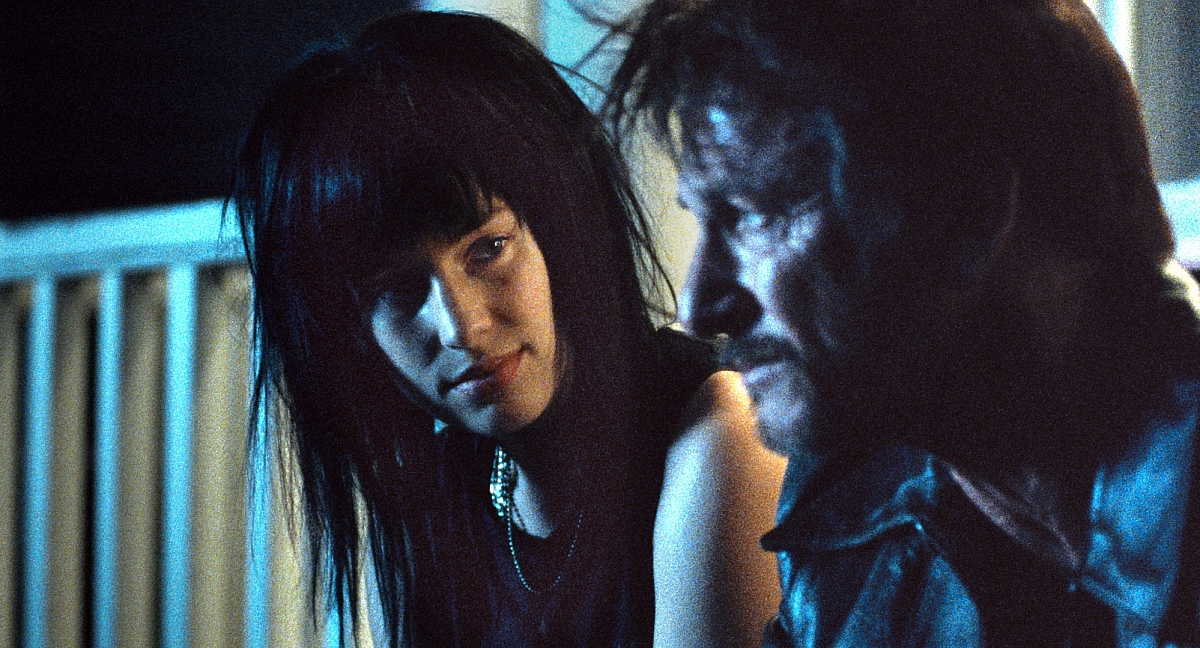
Real life father and daughter Sean Penn and Dylan Penn portray the relationship between Jennifer and John Vogel that serves as the heart of the story.
A three-quarter replica of the real lake house, where a full-sized glorious lake party once took place, was built to be burned down for a scene where John Vogel attempts to scam some insurance money. “Sean wanted it to burn like an inferno,” recalls Moder. “It was tough watching craftsmen assemble this beautiful building only to set it aflame. It was the most incredible thing. I have never witnessed something like this. I don’t know if you remember the house burning in Badlands but that was a reference.” Most of the time two Arriflex 416 cameras were used with Moder serving as the A camera operator and Marcus James looking after the B camera; however, for the house burning five cameras were utilized. “I had this crazy fire suit on as I was running around. This thing went up! That violent image is set to a beautiful Bob Seger song. It’s a trip!”
A creative sequence to shoot was the opening scene. “Early memories of a child in twilight and you can’t help but invest in the moment and it settles you into the movie,” notes Moder. “We used the ARRI swing and tilt lenses that were so fun! The 25mm and 45mm. They were exactly the right lenses for the job. It seemed to both Sean and I that when you have a vision in your head, the plane of focus is so specific and slight. We went to that location for three days at magic hour and captured a lot of great images. There were no storyboards. We had the kids running around with the light doing the right thing. It was a fun, creative time and fortunately it was at the end of our summer schedule so everybody had a shorthand. We didn’t have the whole crew out there so we could look 360 degrees. That was primarily one camera shooting all of this swing and tilt footage.”
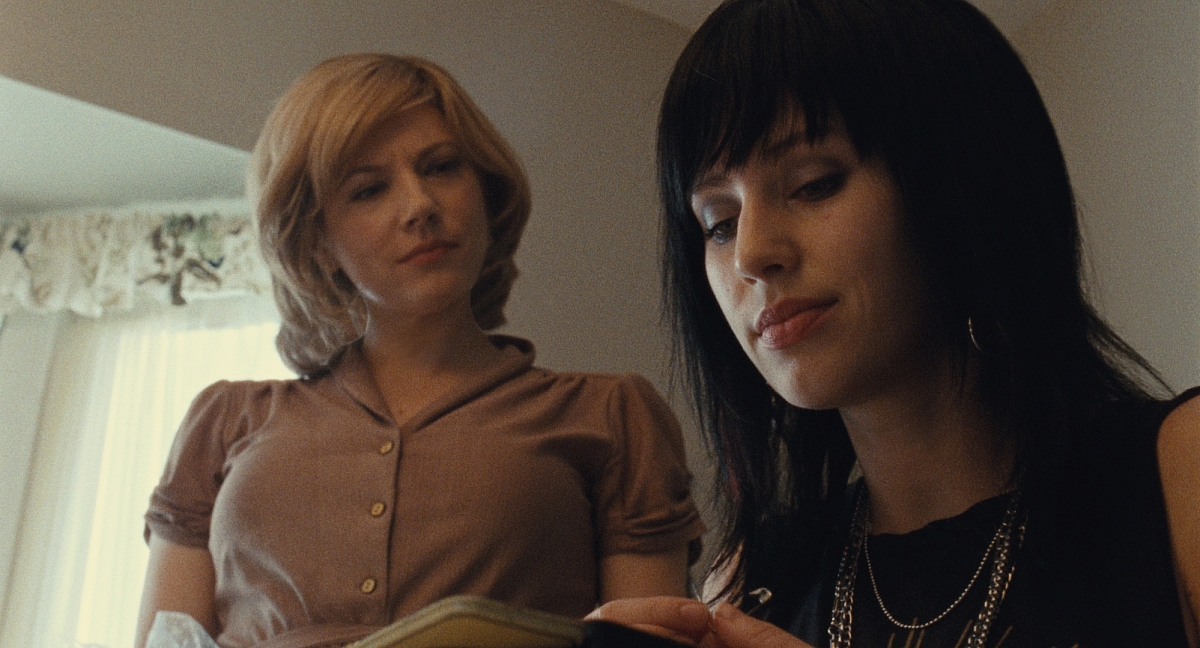
Katheryn Winnick stars as Patty Vogel and Dylan Penn as Jennifer Vogel in "Flag Day."
“We did one sequence at the beginning of the movie where Sean was driving this station wagon and calls up his 11-year-old daughter [Jadyn Rylee] to sit on his lap because he wants to fall asleep,” recalls Moder. “I was sitting in the passenger’s seat shooting them. Sean said, ‘I’m going to close my eyes for a little while. Don’t worry there won’t be a turn for about an hour.’ I did a pan from her actually driving out onto the road.” Not everything could be done for real so the visual effects team led by Ed Bruce did some environmental work such as changing a neon sign over a café. “One of the few gadgets we elected to use was a big clear plastic box to put a camera inside and go underwater. It was just under the surface as the kids are swimming in the lake; that was a fun piece of gear. We tried to keep it classic and to go as minimal as possible.”
Light and color reflect the mental state of the protagonist. “The beginning is warmer, and a lot more highlights and intensity because things are promising but then the truth comes out and her father goes to jail for quite some time; that is what we called the blue period,” explains Moder. “I used some of the tungsten film in the day exteriors and got some more blue out of it. We desaturated things a lot. It was fun to play with that because you feel the [emotional] shift.” The decision was made from the beginning by Penn to go with the 1.85:1 aspect ratio rather than 1.66:1 which is native to 16mm. “We cut a little bit off of the top and bottom.” Some of the only digital footage was captured by drones for some day exteriors. “We had to add the grain and mesh the colors.” Certain scenes were desaturated in the DI. “Because we had the fantastic Stefan Sonnenfeld at Company 3 doing our DI, you barely had to say anything. He was so on it.”
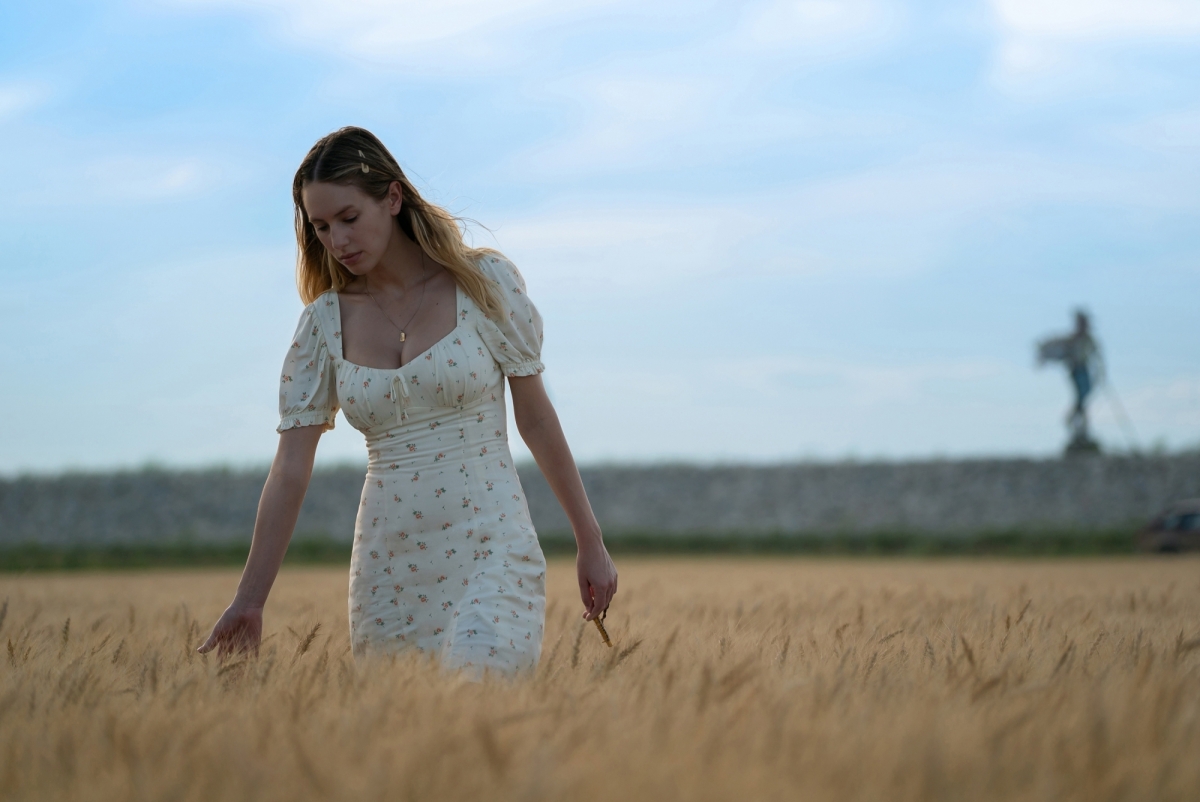
"Flag Day" spans a 20-year period with a gap in principal photography that allowed for all four seasons to be represented.
Penn was able to embrace what the locations had to offer. "Sean had a romantic relationship with some of these trains that are running through Winnipeg so there are a fair number of trains in the film," reveals Moder. “There is this one long sequence between Sean and Dylan sitting in a diner and we were all ready for this train to go by. We set up this master profile where you see a window out the back with the train coming. We had to sit there for an hour until we found out that the train was coming, so they jumped into it and Sean directed it from the diner booth. Sean started the scene and is casual, and even though it’s a seven-minute scene in the end, he knew well enough to go, ‘Lets jump to this part.’ And you would still see the train going in the back so in the edit you could use any part of the dialogue with train going by behind them. All proof to show that Sean’s first crack at acting and directing a film made a beautiful story and an unforgettable project.”